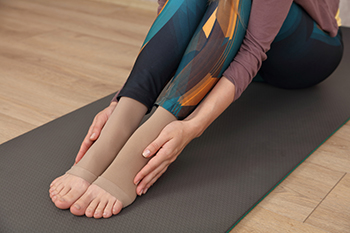
Chilly feet can be more than a reaction to low temperatures. Reduced blood flow is a common cause, often linked to circulatory conditions or narrowing of the arteries. Nerve disorders, such as peripheral neuropathy, may also alter the way the feet sense temperature. Hormonal changes, low thyroid activity, or certain medications can slow circulation and leave the toes feeling icy. In some cases, prolonged sitting or wearing tight footwear limits blood movement to the extremities. Even stress or anxiety can temporarily constrict blood vessels and make the feet colder. Persistent coldness, especially when paired with color changes, numbness, or pain, should be evaluated to rule out underlying health concerns. Identifying the source allows for more targeted solutions, whether that means improving circulation, protecting nerve health, or adjusting daily habits. If you consistently have cold feet, it is suggested that you see a podiatrist for an accurate assessment and appropriate treatment.
While poor circulation itself isn’t a condition; it is a symptom of another underlying health condition you may have. If you have any concerns with poor circulation in your feet contact Tanya R. Sellers-Hannibal, DPM of Maryland. Our doctor will treat your foot and ankle needs.
Poor Circulation in the Feet
Peripheral artery disease (PAD) can potentially lead to poor circulation in the lower extremities. PAD is a condition that causes the blood vessels and arteries to narrow. In a linked condition called atherosclerosis, the arteries stiffen up due to a buildup of plaque in the arteries and blood vessels. These two conditions can cause a decrease in the amount of blood that flows to your extremities, therefore resulting in pain.
Symptoms
Some of the most common symptoms of poor circulation are:
- Numbness
- Tingling
- Throbbing or stinging pain in limbs
- Pain
- Muscle Cramps
Treatment for poor circulation often depends on the underlying condition that causes it. Methods for treatment may include insulin for diabetes, special exercise programs, surgery for varicose veins, or compression socks for swollen legs.
As always, see a podiatrist as he or she will assist in finding a regimen that suits you. A podiatrist can also prescribe you any needed medication.
If you have any questions, please feel free to contact our office located in Owings Mills, MD . We offer the newest diagnostic and treatment technologies for all your foot care needs.
